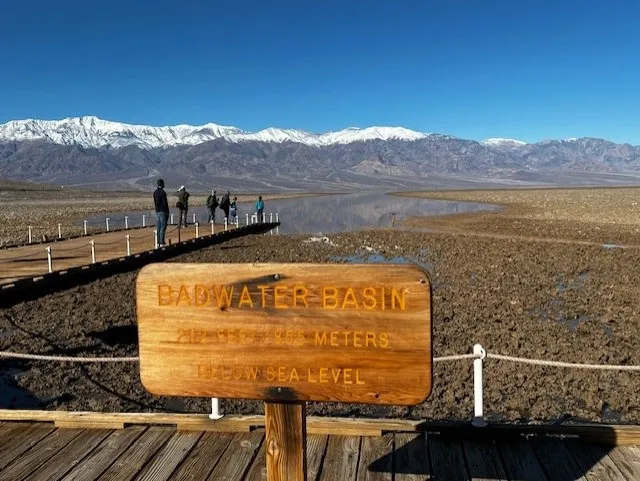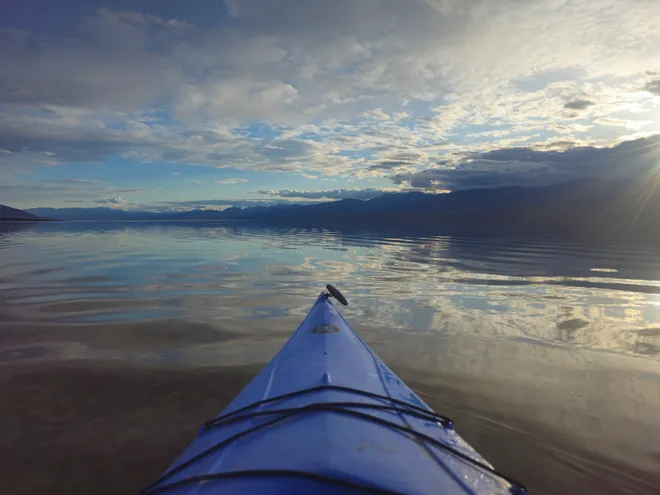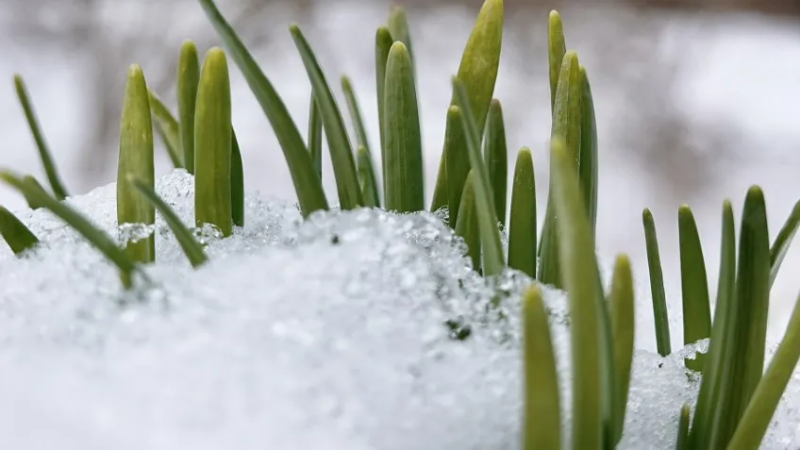Mysterious lake at Death Valley National Park has outlasted expectations: What to know
The puzzling arrival and surprisingly long life of a new lake in Death Valley National Park has captivated park rangers, visitors and researchers this winter.
The temporary lake arrived with the rainy remnants of Hurricane Hilary last August. It remains thanks to a series of atmospheric rivers that kept delivering more rain. Its presence has raised questions about its past, and future.
For example, could the moisture helping keep the lake alive prompt a rare wildflower “super bloom?" How long might the lake remain? What's the connection to El Niño? And, could the lake, which has made surprise appearances in the past, return more often in a warming world?
Lakes have appeared and disappeared in Death Valley for hundreds of thousands of years, leaving behind the park's scenic terraced shorelines that bear testimony to the much wetter past of the driest place in North America. Its newest lake isn't expected to last long enough to leave that kind of geologic evidence but it’s still “pretty special,” said Elyscia Letterman, an interpretive ranger at the 3.4 million-acre park.
“It’s really beautiful at sunrise and sunset,” Letterman said. “It’s really magical to see the peaks reflected in the lake.”
What isn't so magical is the damage the sudden influx of visitors leave in their wake when they park haphazardly, or crush the valley's delicate salt crust when they step off trails or, worse, drive off road, Letterman said. The park is reminding visitors to "be respectful" and stay on existing trails to prevent further damage. No one knows how long the deep impressions left by footprints could remain, she said.

How did the Death Valley lake arrive?
It isn't easy to get water into Death Valley, said Jeffrey Knott, an emeritus professor of geological sciences at California State Fullerton.
Storms that come in from the west have to climb up and over three mountain ranges and each time they do, more rainfall is lost, leaving little for Death Valley, Knott said. But the chances for rain improve when a rare storm arrives from the south, like Hurricane Hilary.
Hilary's remnants flooded the region with at least 2.2 inches of rain, Letterman said. “When your yearly average is a little under 2 inches, when you get all of that in a single storm, that’s a lot."
That rain made its way to the Amargosa River. The river flows into and ends in the park. On the rare occasions when it rains enough to get the river flowing, the lake reappears in the park's Badwater Basin.
Water also flows into underground water supplies and the bottom of the valley, the park's lowest point.
The lake began to appear almost immediately as Hilary drenched the area, Letterman said. It continued to fill over the next few days. Eventually it grew to about 6 miles long and 3 miles wide, covering a normally dry salt flat.
The lake is unofficially called Lake Manly, the name given to the cluster of lakes that anciently covered the landscape there.
How long will the lake remain in Death Valley?
No one knows how long until the sun bakes away the water. It’s already lasted longer than the rangers and others expected. The lake that arrived after a big rain in December 1992 lasted about four months.
Groundwater levels remain high in the area because of the high rainfall totals over a large region, said Guo Yu, an assistant research professor at the Nevada-based Desert Research Institute. That can "help keep the water level high for a long period of time.”
If an atmospheric river happened in an otherwise dry year, Yu said the lake level could drop faster.
In recent weeks, the lake has been receding, slowly evaporating, Letterman said. But then the atmospheric river between Feb. 4-7 dumped another 1.5 inches of rain over the area. The lake rose again, and was nearly a foot deep around Valentine’s Day. It wasn’t as deep as after the hurricane, however.

Is the lake's occasional appearance linked to El Niño?
Perhaps. The lake's arrival has been linked to the El Niño climate pattern several times in the past. A pattern of warmer than normal water and weaker trade winds along the equator in the Pacific, El Niño can bring more intense storms and more rainfall to California.
Winter lakes appeared in the park after big rains in 1969, 1992-1993, 2005 and 2015, all El Niño seasons, according to federal data.
U.S. Geological Survey records dating back to the 1960s show nearly all of the highest water levels in the Amargosa River were recorded during El Niño years.
Could the lake be reappearing more often than in the past?
It’s hard to say, in part because there doesn't appear to be consistent records on how often the lake has occurred in the past, said Knott and Letterman.
Overall, the climate in the Southwest is projected to be warmer and drier in the future. However, the National Climate Assessment reports that atmospheric rivers are expected to intensify under the warming climate in the Southwest. Scientists also say the Pacific is producing more intense hurricanes, which hold more water as the oceans and air get warmer, increasing the chances that moisture could travel into arid regions of the Southwest.
Will Death Valley have a 'super' wildflower bloom?
There doesn't seem to be one particular way to forecast a super bloom, Letterman said. Recent rain and moisture may help, but a super bloom is "unlikely," judging by a few hints they’ve seen so far.
When the last "super" bloom occurred in 2016, early blooms started to appear in January, she said. "There are sprouts around the park, and we are expecting to have flowers, but probably not fields of flowers."

Climate change in Death Valley
One of the hottest places on Earth turns out to be a great place to study ancient lakes and climate change over thousands of years, said Knott who spent decades researching in the park.
When Knott started research in the park in 1992, it was "no big deal" to go out in April or May, he said. “I could go out and walk around, it was cool enough,” he said. “But in the last 10 years, by April 16, I can’t go out anymore, it’s way too hot.”
“Summer has started a month earlier and it also extends later. It used to be October was pretty easy, but now it’s still hot," he said. "It was always the hottest place on earth, but now it’s hotter longer.”
Disclaimer: The copyright of this article belongs to the original author. Reposting this article is solely for the purpose of information dissemination and does not constitute any investment advice. If there is any infringement, please contact us immediately. We will make corrections or deletions as necessary. Thank you.






